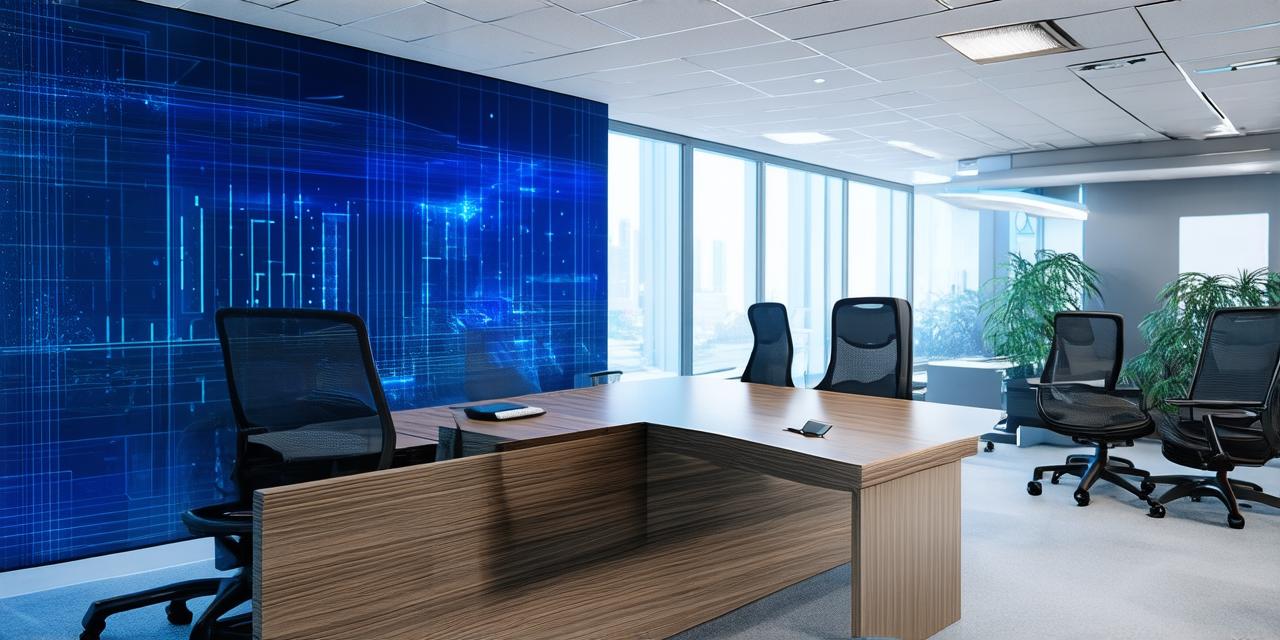Augmented reality (AR) is quickly becoming one of the most exciting and transformative technologies in the business world. By overlaying digital information onto the real world, AR allows companies to enhance their products and services, engage customers in new ways, and improve efficiency across the board.
AR for Retail: Enhancing the Shopping Experience with Interactive Products
One of the most well-known uses of AR in business is in retail. By using AR technology, retailers can create interactive products that allow customers to see how a product will look in their own home or on their own body before making a purchase. This not only enhances the shopping experience but also reduces the number of returns and improves customer satisfaction.

For example, IKEA’s AR app allows customers to preview furniture in their homes before buying it, while Sephora’s AR makeup app lets customers try on different makeup looks without having to apply them physically. By using AR technology, these companies are able to create a more engaging and personalized shopping experience for their customers.
AR for Manufacturing: Improving Efficiency and Reducing Costs
AR is also being used in manufacturing to improve efficiency and reduce costs. By overlaying digital information onto the physical world, AR can help workers perform tasks more accurately and quickly, while reducing errors and waste.
For example, BMW uses AR technology on its production line to guide workers through complex assembly processes, improving accuracy and reducing downtime. Similarly, GE uses AR technology in its maintenance operations to allow technicians to visualize and repair equipment more easily, reducing the need for expensive parts and labor.
AR for Healthcare: Enhancing Patient Care with Interactive Medical Devices
In healthcare, AR is being used to enhance patient care by creating interactive medical devices that allow doctors and nurses to visualize patient anatomy in real-time. This not only improves the accuracy of diagnoses and treatments but also reduces the risk of errors and complications.
For example, the da Vinci surgical system uses AR technology to provide surgeons with a 3D view of the patient’s internal organs, allowing them to perform complex surgeries with greater precision and control. Similarly, the HoloSuit is an exoskeleton that uses AR technology to assist patients with spinal cord injuries in walking and performing other physical tasks.
AR for Education: Enhancing Learning with Interactive Textbooks and Lessons
In education, AR is being used to enhance learning by creating interactive textbooks and lessons that allow students to explore concepts in a more engaging and immersive way. This not only improves student engagement but also allows teachers to personalize their teaching methods based on individual student needs.
For example, the Aurasma app allows teachers to create AR-enhanced lesson plans that include interactive elements such as 3D models, videos, and animations. Similarly, the Anatomy Visualizer app uses AR technology to allow students to explore the human body in a more interactive and immersive way, improving their understanding of anatomy and physiology.
Case Studies: Real-World Examples of AR in Business
To illustrate how AR is being used in business, let’s look at some real-world examples.
1. IKEA’s AR App: IKEA’s AR app allows customers to preview furniture in their homes before buying it, improving customer satisfaction and reducing the number of returns. By using AR technology, IKEA is able to create a more engaging and personalized shopping experience for its customers.
2. BMW’s AR Technology: BMW uses AR technology on its production line to guide workers through complex assembly processes, improving accuracy and reducing downtime. By using AR technology, BMW is able to improve efficiency and reduce costs in its manufacturing operations.
3. da Vinci Surgical System: The da Vinci surgical system uses AR technology to provide surgeons with a 3D view of the patient’s internal organs, allowing them to perform complex surgeries with greater precision and control. By using AR technology, the da Vinci system is able to improve patient outcomes and reduce the risk of errors and complications in surgery.
4. Aurasma App: The Aurasma app allows teachers to create AR-enhanced lesson plans that include interactive elements such as 3D models, videos, and animations. By using AR technology, the Aurasma app is able to improve student engagement and personalize teaching methods based on individual student needs.
The Future of AR in Business: Trends and Predictions for Developers
As AR technology continues to evolve, we can expect to see even more exciting and transformative uses of AR in business. Some trends and predictions for the future of AR in business include:
- Increased adoption of AR in retail: As retailers continue to look for ways to enhance the shopping experience, we can expect to see more widespread adoption of AR technology in retail. This will likely include new and innovative uses of AR, such as virtual try-on experiences for clothing and makeup.
- Greater integration of AR in manufacturing: As manufacturers continue to look for ways to improve efficiency and reduce costs, we can expect to see greater integration of AR technology into manufacturing processes. This will likely include the use of AR for quality control, maintenance, and training.
- Expansion of AR in healthcare: As healthcare providers continue to look for ways to improve patient outcomes and reduce costs, we can expect to see expansion of AR technology in healthcare. This will likely include the use of AR for remote diagnosis and treatment, as well as for medical education and training.
- Growth of AR in education: As educators continue to look for ways to engage students and improve learning outcomes, we can expect to see growth of AR technology in education. This will likely include the use of AR for interactive textbooks and lessons, as well as for virtual field trips and simulations.
Conclusion: The Potential of AR in Business is Endless
Augmented reality is a powerful tool that has the potential to revolutionize business across a wide range of industries. By overlaying digital information onto the physical world, AR can enhance products and services, engage customers in new ways, and improve efficiency across the board. As developers, it’s up to us to explore the endless possibilities of AR and to create innovative solutions that will help businesses succeed in an increasingly competitive market.
FAQs
1. What is augmented reality (AR)?
Augmented reality is a technology that overlays digital information onto the physical world, creating an enhanced version of reality.
2. How is AR being used in retail?
AR is being used in retail to create interactive products that allow customers to see how a product will look in their own home or on their own body before making a purchase.
3. How is AR being used in manufacturing?
AR is being used in manufacturing to improve efficiency and reduce costs by guiding workers through complex assembly processes, assisting with quality control, and providing training.
4. How is AR being used in healthcare?
AR is being used in healthcare to improve patient outcomes and reduce costs by providing remote diagnosis and treatment, as well as for medical education and training.
5. How is AR being used in education?
AR is being used in education to enhance learning by creating interactive textbooks and lessons, as well as for virtual field trips and simulations.
